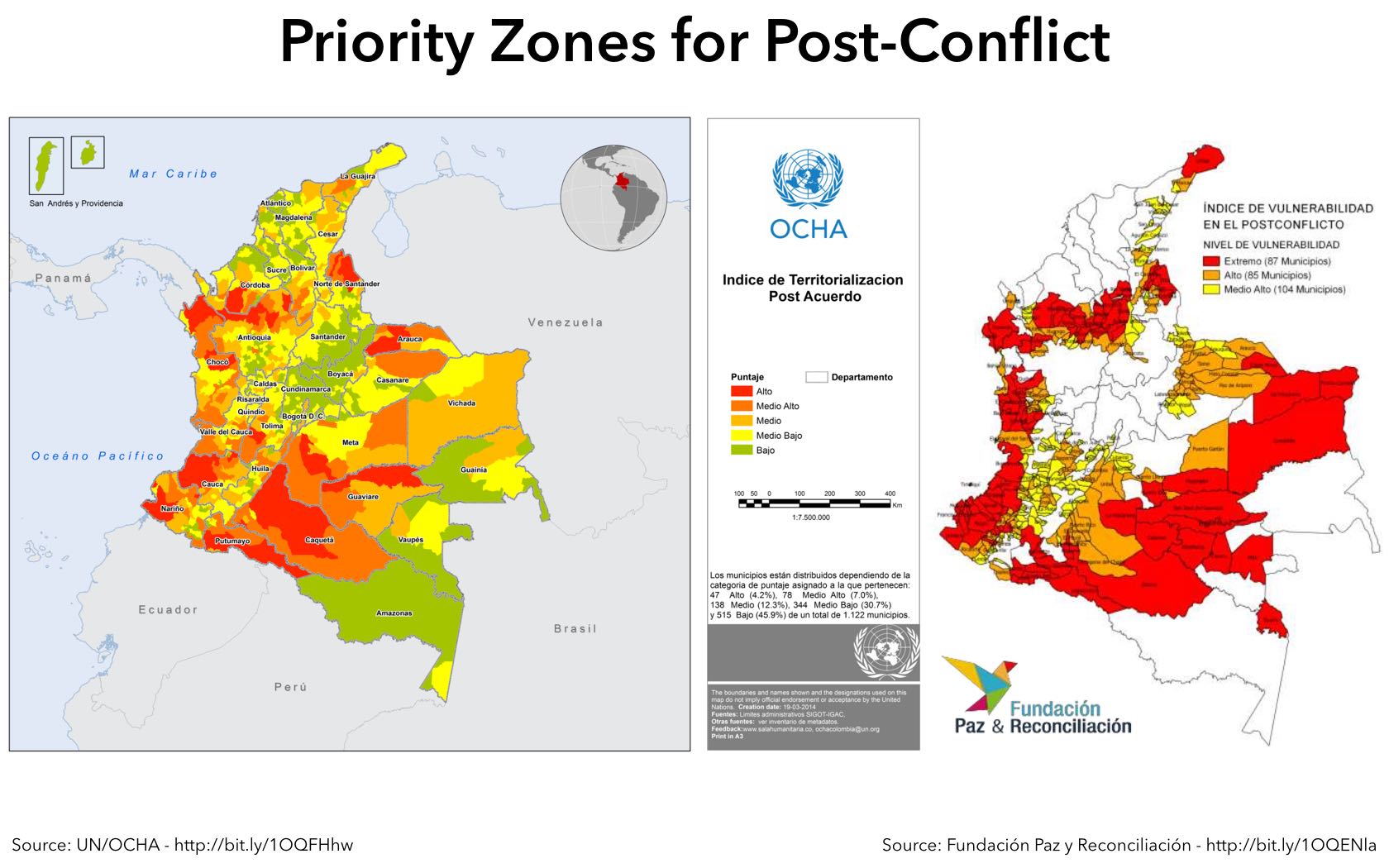“Territorial Peace”
Vast areas of rural Colombia, and some peripheral urban neighborhoods, suffer from a near-total absence of government presence. In these areas, which comprise perhaps one-third to one-half of national territory but only about 10 to 15 percent of the population, police protection is rare. Roads are unpaved and in abysmal condition. The justice system is unheard of. Landholdings are rarely titled. Many analysts view both guerrilla activity and narcotrafficking as symptoms of this stubborn history of government abandonment. Residents of these areas distrust the government, but routinely demand that it be present to provide basic services that most citizens take for granted.
The peace accords reached so far with the FARC on rural development and drug policy seek to reverse this history of government abandonment by guiding major new investments in these areas. The main challenge to implementing these accords is the sheer number and vast expanse of the regions involved, the Colombian government’s unproven implementation capacity, and the power of criminal groups to undermine the effort, often through corruption, as long as impunity persists.
The maps below are the product of studies by the UN and Colombia’s Peace and Reconciliation Foundation to map priority post-conflict municipalities based on indicators of socioeconomic well-being, institutional presence, and illegal activity.

 15
15